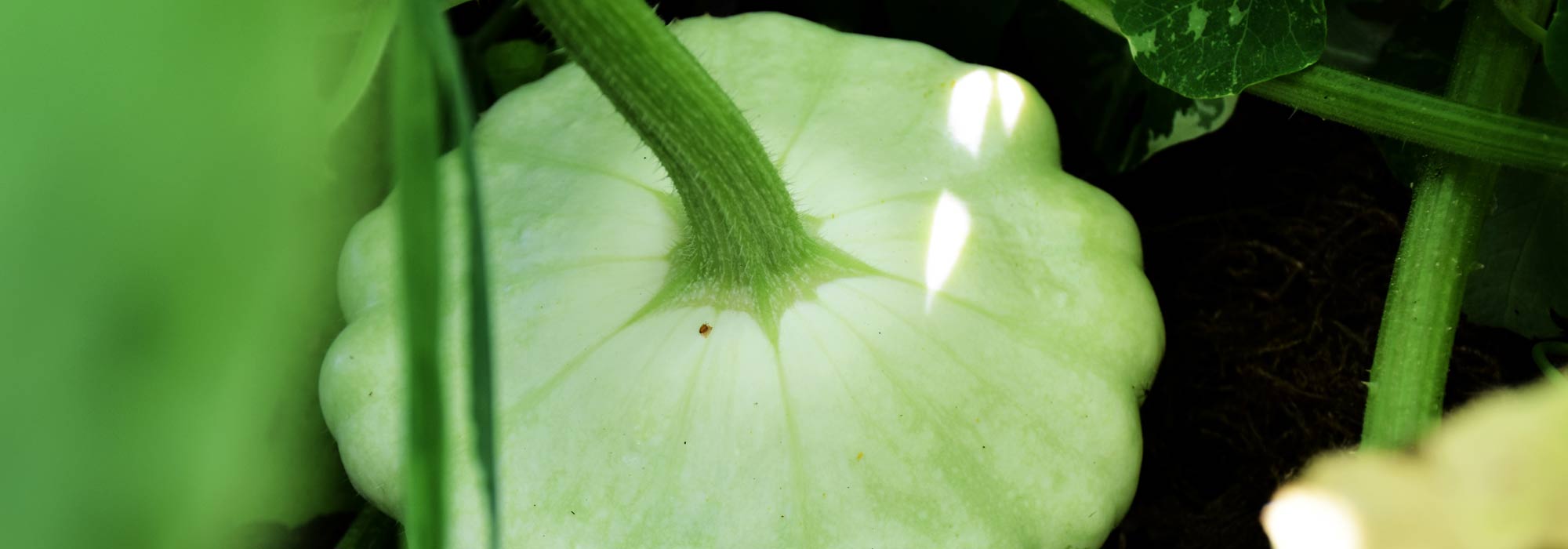
Pattypan squash: sowing, growing, harvest
Contents
Pattypan squash in a nutshell
- Pattypan squash is an annual vegetable plant with deciduous foliage from the family Cucurbitaceae and the genus Cucurbita pepo
- It is a non-vining plant with a compact habit that produces star-shaped and slightly rounded squashes, whose weight and colour vary according to the varieties
- Pattypan squash enhances the flavour of other foods, and it is cooked differently depending on its degree of ripeness
- Very low in calories, rich in fibre and trace elements, pattypan squash is a vegetable particularly dietary
- Easy to grow, pattypan squash requires little maintenance and can be cultivated in the ground as well as in pots
A word from our expert
The patty pan squash is an ancient vegetable that belongs to the family of cucurbits. It is part of the genus Cucurbita, which includes around fifteen climbing and creeping species native to the American continent. Five of these are particularly widespread worldwide, namely Cucurbita pepo L., which encompasses squashes, courgettes, patty pan squashes, and pumpkins.
Introduced to Europe in the 16th century, the patty pan squash is available in several varieties producing fruits of varying weights, shapes, and colours. The dense flesh of the patty pan squash offers a flavour that is mildly sweet and very similar to that of an artichoke heart.
Once a forgotten vegetable in our gardens, the tasty flesh of the patty pan squash has recently regained its status in the kitchen, where it wonderfully enhances the flavour of the foods it accompanies.
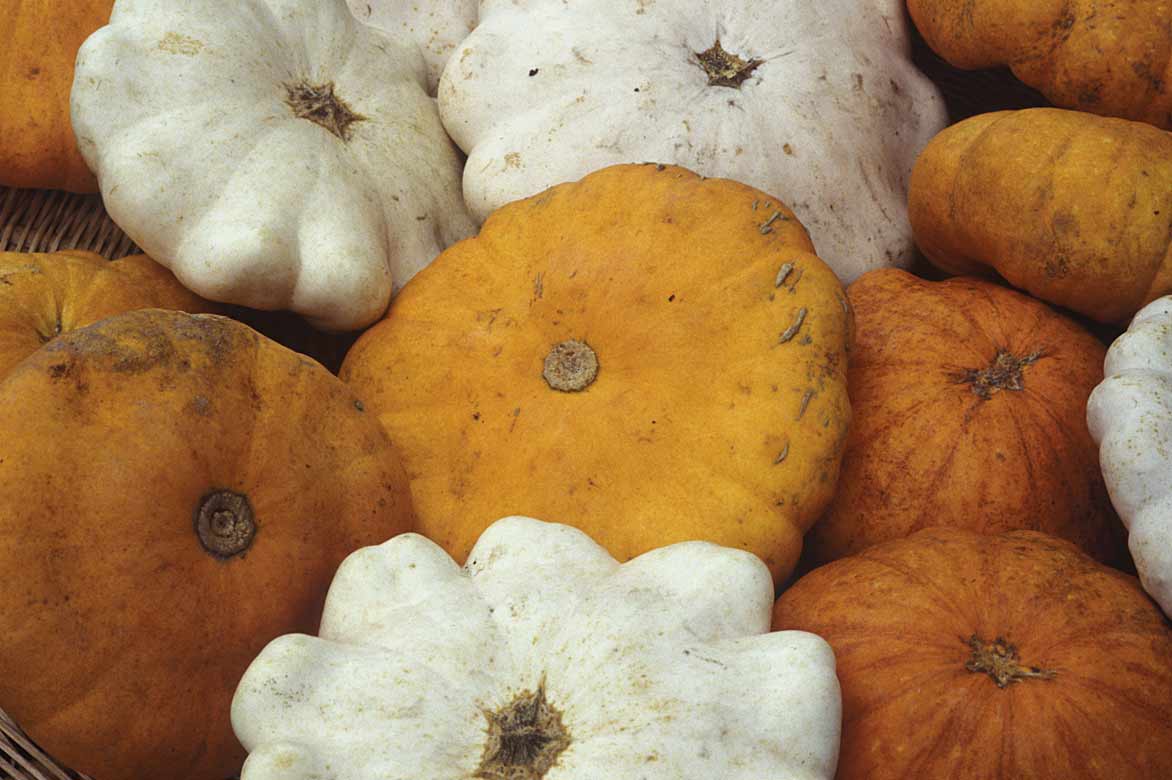
© Jean Weber – Flickr
The patty pan squash is also a dietary vegetable, very low in calories, but rich in fibre and water, making it particularly easy to digest.
Easy to grow, the patty pan squash is a vegetable plant that requires little maintenance once established, apart from regular watering, a good layer of mulch, and a bright, warm location. This variety of squash thrives in rich, loose, and heavy soils and can be grown in the ground or in a large pot. It is sown in a warm place at the beginning of spring, or directly in the ground from May, for a harvest from late summer to autumn.
Here are all our tips for easily growing this lovely ancient vegetable that we enjoy rediscovering in the garden as well as on the plate!
Description and botany
Botanical data
- Latin name Cucurbita pepo var. ovifera
- Family Cucurbitaceae
- Common name pattypan, Spanish artichoke, priest's cap, elector's cap, imperial crown, cymling
- Flowering May to October
- Height 40 cm
- Exposure sunny, bright
- Soil type rich, loose, heavy
- Hardiness frost-sensitive
Pattypan, also known as Spanish artichoke, priest’s cap, elector’s cap, imperial crown, or cymling, is an annual vegetable plant that is not hardy and is sensitive to frost. It belongs to the cucurbit family, like squash, pumpkin, and courgette. Cucurbita pepo var. ovifera is also native to Central America.
This variety of vegetable plant with a compact growth habit produces vigorous stems that bear large, deciduous, velvety, palmate leaves (leaves with rounded lobes).
The inflorescence of the pattypan consists of solitary female flowers and axillary male flowers (located in the axil of the leaves). Their campanulate corolla (narrow tube and spreading lobes) is made up of five fused yellow petals.
This flowering leads, after pollination, to fruits measuring 10 to 25 cm in diameter, weighing between 500 g and 3 kg depending on the variety. The fruits can be cream white, yellow-green, orange, or variegated in several colours. Depending on the varieties, these circular fruits have a flattened shape and are more or less bulbous, with a more or less lumpy periphery.

Orange pattypan © Marco Verch | White pattypan © Amanda Slater | Variegated pattypan © Jamain
Each plant of pattypan squash can produce between 10 and 15 fruits with dense, firm, and slightly floury flesh. The flesh conceals oval, flattened seeds.
Pattypan fruits are rich in fibre and contain a wide range of minerals and vitamins A, C, and B6.
Read also
Sowing of squashes and courgettesMain species and varieties
Our best varieties of pattypan squash
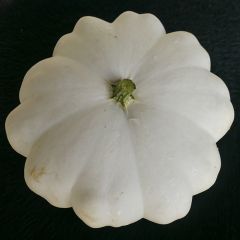
White Pattypan Squash - Cucurbita pepo
- Flowering time May to July
- Height at maturity 60 cm
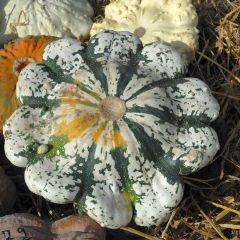
Patty Pan Squash Variegated - Cucurbita pepo
- Flowering time August, September
- Height at maturity 45 cm
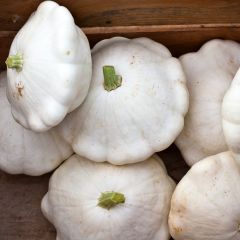
Pattypan Squash Polo F1 - Cucurbita pepo
- Flowering time May to July
- Height at maturity 60 cm
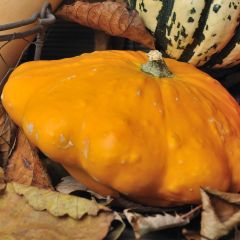
Squash Orange Scallop - Ferme de Sainte Marthe Seeds
- Flowering time June to August
- Height at maturity 50 cm
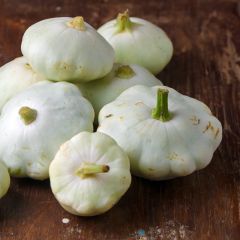
Squash White Scallop Croblan - Vilmorin Seeds
- Flowering time May to July
- Height at maturity 60 cm
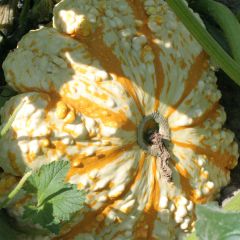
Squash Verruqueux Panaché Scallop - Ferme de Sainte Marthe Seeds
- Flowering time July to September
- Height at maturity 60 cm
Discover other 'Patty Pan' Squash
View all →Available in 1 sizes
Available in 1 sizes
Available in 2 sizes
Available in 1 sizes
Available in 1 sizes
Available in 1 sizes
Available in 1 sizes
Available in 1 sizes
Sowing and planting
Where to plant pattypan?
Pattypan is a non-hardy vegetable plant that requires warmth to develop properly and to bear fruit well.
Depending on the climate of your region, plant it in the ground in the vegetable garden, or under a garden greenhouse.
Pattypan enjoys being planted in rich, loose, and heavy soil. The chosen location must also receive plenty of light.
When and how to sow pattypan?
Pattypan squash is an annual plant that propagates mainly by sowing its seeds. It is resown each year for new crops.
Two sowing periods are possible:
- You can sow your seeds indoors at the very beginning of spring, between March and April. Place your pattypan seeds in an area where the minimum temperature reaches between 18 and 25°C (and up to 30°C in the best case).
- Sowing in place is possible from May to June.
Note: The germination of pattypan is very quick, generally occurring within 4 to 10 days after sowing its seeds.
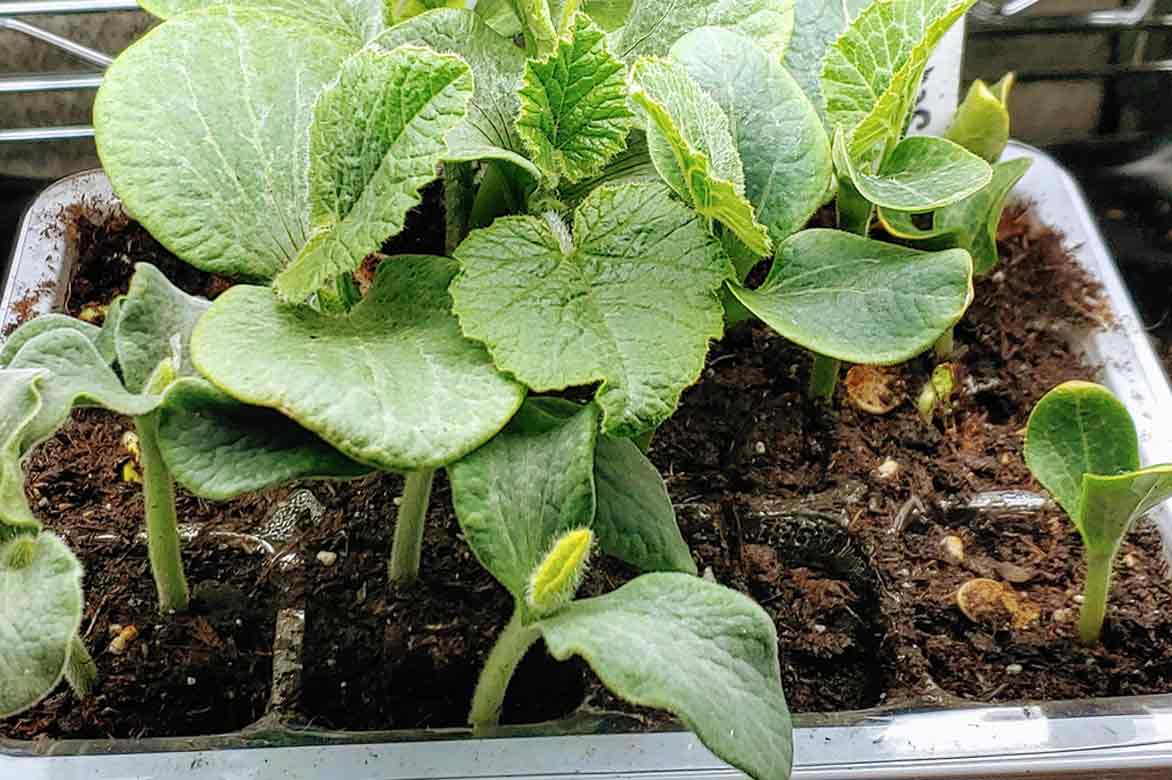
Indoor Sowing © sk – Flickr
Sowing in pots
At the beginning of spring, pattypan is sown in pots, in a rich and cool substrate made up of equal parts potting soil and garden soil.
- Sow your pattypan squash seeds about 1 cm deep.
- Lightly firm the soil.
- Place in a bright room.
- Use a spray bottle to keep the substrate moist.
Sowing in place
If pattypan is sown directly in place, the risk of frost must be completely eliminated.
- Start by tilling the soil before adding a base fertiliser.
- Sow in clusters of two or three seeds at a depth of 2 or 3 cm.
- Lightly firm the soil.
- Thin out when the young plants reach a few cm in height.
When and how to plant pattypan?
In open ground
Transplant your young squash plants into open ground from May.
- Start by tilling the soil to loosen it.
- Dig holes 20 to 25 cm wide and deep, ensuring they are spaced 1.20 m apart in the row, and 2 m between rows.
- Fill each hole two-thirds full with well-matured compost.
- Place the squash plant in the hole and fill with soil before firmly packing it down.
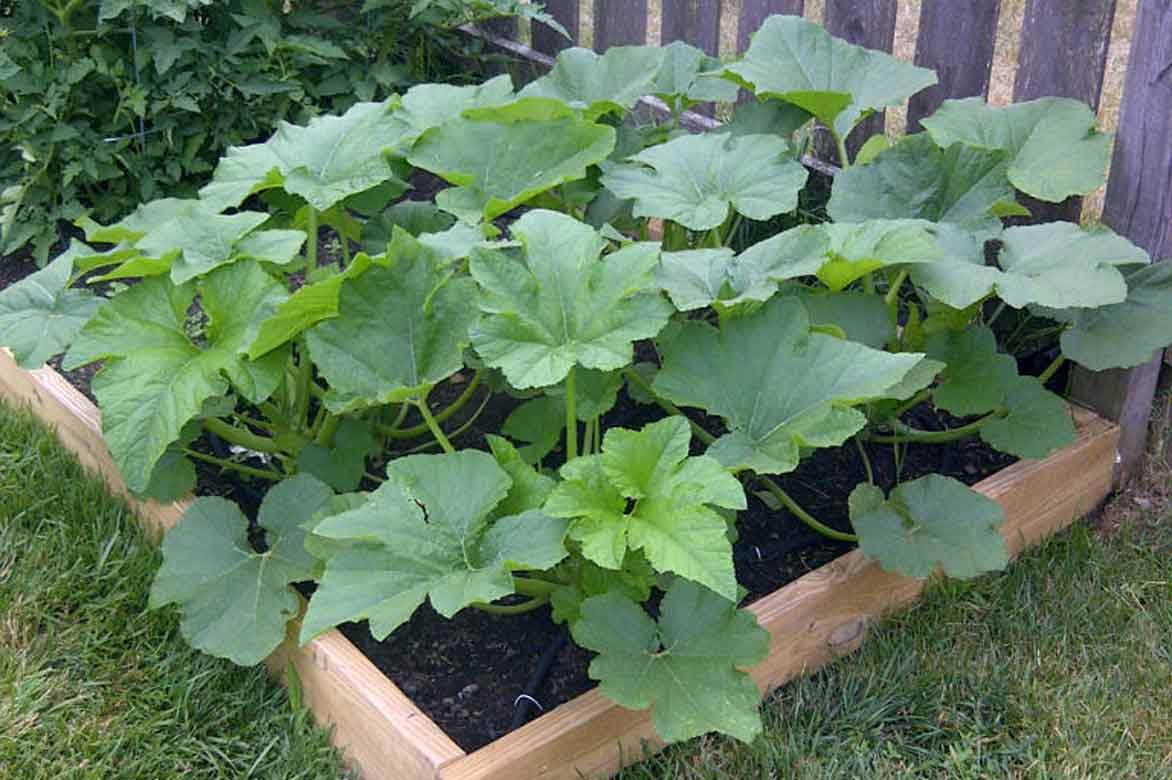
© Vicki Timman – Flickr
In a pot
Squash is a non-vining plant that can easily be grown in a pot on a bright terrace, patio, or balcony. Use a container of at least 30 to 35 l. Fill the container with a compound substrate made from a mix of potting soil, garden soil, and manure. Keep the substrate moist (without waterlogging) and mulch the surface of the pot.
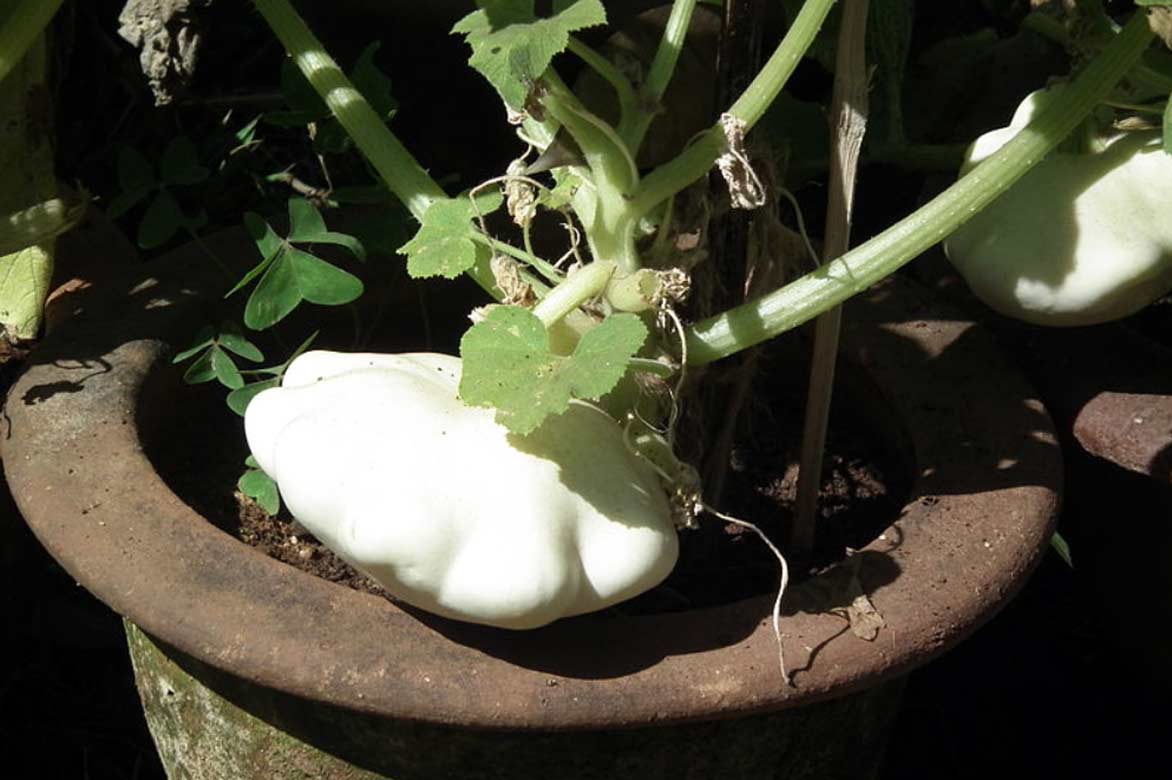
Squash in a pot © Rameshng
Harvest, storage and use
Harvesting
The harvest of the pattypan usually takes place between August and November. It is interesting to note that this vegetable can be harvested and consumed at different stages of ripeness.
- When harvested very young, the pattypan requires special preparation to be consumed like a gherkin.
- When harvested immature (that is, about 65 to 70 days after sowing), the fruit has a very thin epidermis that does not need to be peeled. Additionally, the flesh of the pattypan is particularly tender and almost seedless at this stage.
- If you wish to consume your pattypan at perfect ripeness, a simple tip can help you determine the right time for harvesting. Observe the peduncle of the pattypan. When it is well dried and the fruit seems ready to detach itself, it is time to pick it.
Storage
The younger the pattypan fruits are harvested, the less time you will be able to store them. In fact, an immature pattypan can be stored for a maximum of 3 to 5 days in the vegetable drawer of your refrigerator. However, when harvested at perfect ripeness, the fruit of the pattypan squash can be stored for over 6 months as long as you place it in a space that is both dry and dark (like a cellar).
Culinary uses
An early harvest of the pattypan is indeed possible. However, when the fruit is picked very young, you must pickle it in vinegar before consuming it. It is then used as a condiment and pairs very well with cold cuts and meats.
The immature pattypan is consumed just like courgette. Once well rinsed in water (as its skin is not removed), you can slice the fruit into strips, cubes, or quarters depending on your inspiration. The pattypan can then be sautéed, baked, or steamed. When consumed this way, this pattypan squash pairs very well with herbs and spices, as well as with anchovies, brandade, tomatoes, or peppers. Similarly, the pattypan enhances the flavours of minced meats, dried fruits, and cheeses.

Stuffed pattypan ©sk – Flickr
When consumed at maturity, the pattypan is prepared like any other squash. It can be cooked in a gratin or velouté, stuffed, or made into a creamy purée.
Note: Low in calories and high in fibre, the pattypan is a true weight-loss ally that fits perfectly into a diet. Moreover, this vegetable is also rich in provitamin A, vitamin B, and minerals.
Maintenance and care of pattypan squash
Easy to grow, the pattypan squash requires no more maintenance than courgette, provided it benefits from soil covered with a good layer of organic mulch. Regularly renew this layer with grass clippings, straw, or even chopped comfrey or nettles. Mulching helps to maintain soil freshness for longer by limiting evaporation. Similarly, organic matter enriches the soil as it decomposes, and effectively limits the appearance of adventives, commonly known as weeds.
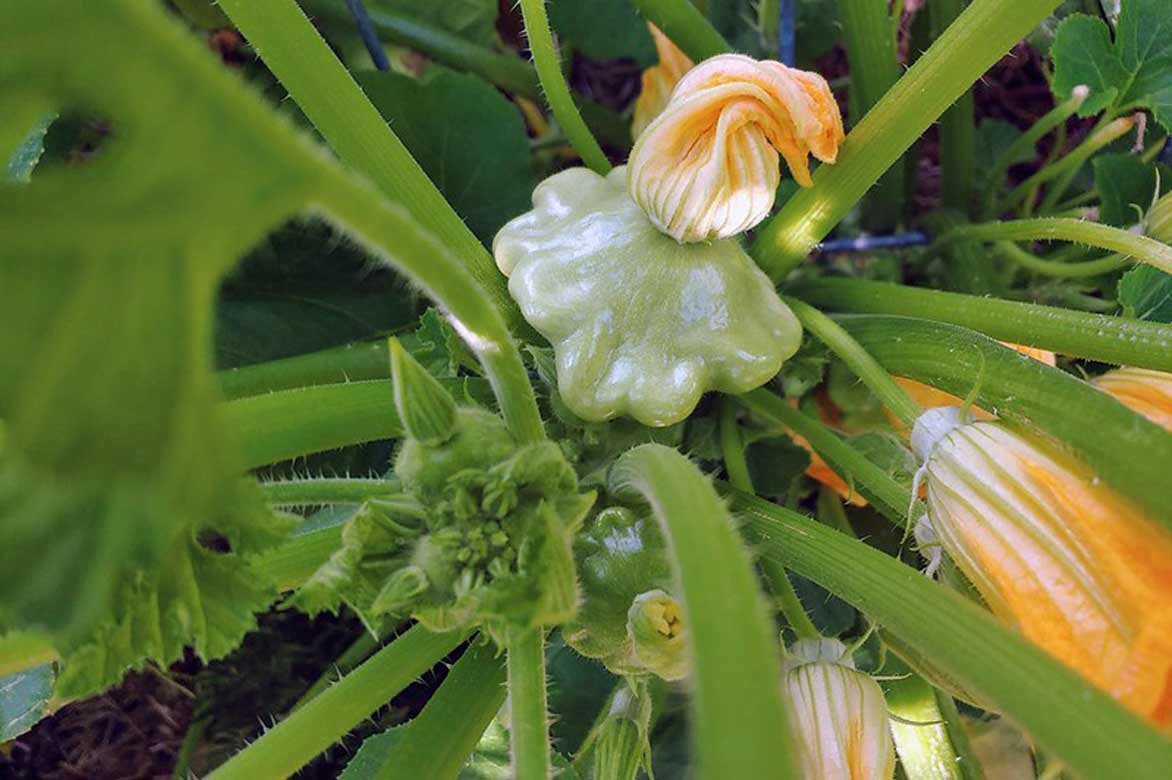
Fructification of pattypan squash © Sk – Flickr
To encourage the fruiting of your pattypan squash plants, they must first enjoy a very vigorous initial growth. Only once the vegetation is well established will the plants flower and bear fruit. Drought, rain, cold… weather conditions can impact this growth. To promote their healthy development, ensure you water your pattypans regularly at the base, and apply diluted nettle manure at 15-20%. Watering should also be more frequent during the fruit growth stage.
If you are growing your pattypan squash plants in pots, proceed in the same way. Mulch the substrate and water regularly. Be aware that the substrate tends to dry out more quickly in pots than in open ground. Therefore, monitor the moisture level of your containers.
Tips
To prevent your squashes from rotting, place a slate or tile under the fruit. This way, the pattypan squash is no longer in contact with the soil and is therefore not affected by its moisture.
Diseases and potential pests
In the vegetable garden, pattypan is really sensitive only to powdery mildew, a fungal disease characterised by the appearance of white spots on the plant’s leaves. The affected foliage dries out and then falls prematurely.
The fungus responsible for powdery mildew appears only when the weather is very dry or when temperatures are mild (between 23 and 26°C). Therefore, your pattypan plants are mainly sensitive to it in spring and at the end of the growing season. When powdery mildew appears in the latter case, the fruits can no longer be affected. In this case, no treatment is necessary. However, if you notice the issue in early spring, treat the powdery mildew by spraying a sulphur-based product on the plant’s foliage.
Preventively avoid watering the leaves or flowers of your pattypan plants to limit the risk of powdery mildew appearing.
Associate the pattypan squash
Pattypan squash can be associated with Fabaceae (formerly legumes), such as beans or peas, as well as alliums, like chives, onions, or even shallots. Avoid, however, planting pattypan squash near potatoes and cucumbers. This type of association may harm each of these vegetables.
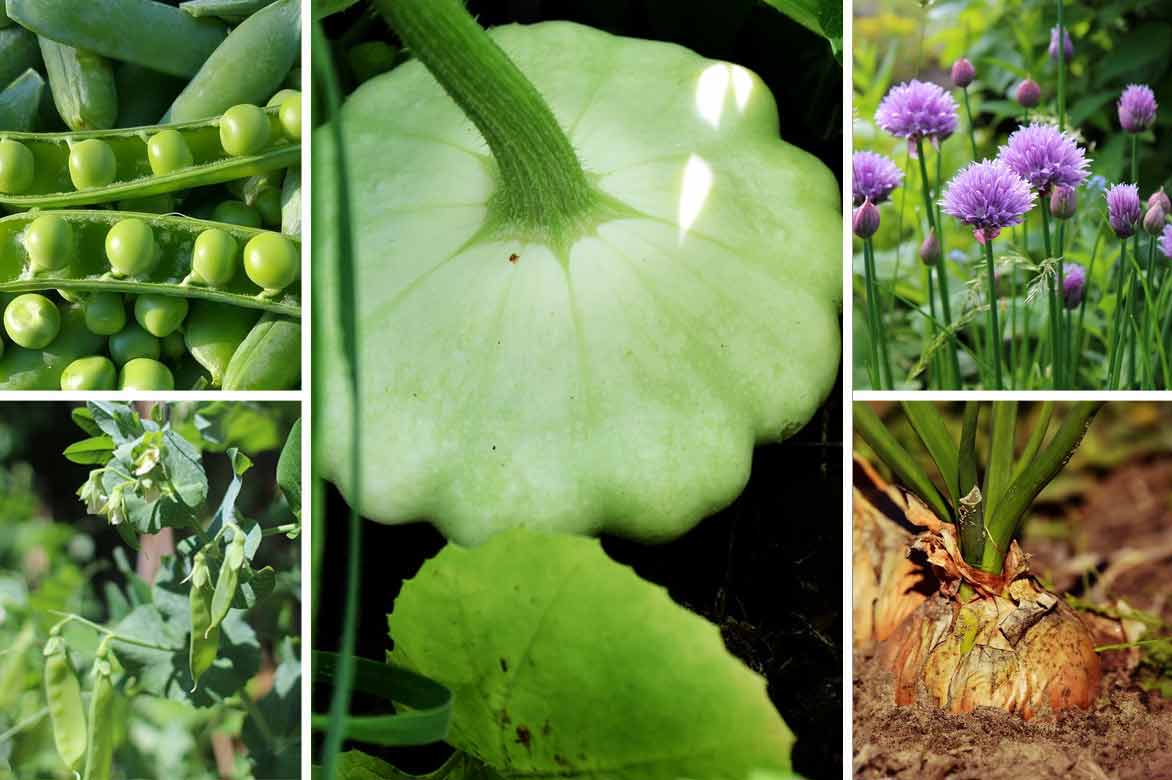
To produce many fruits, the flowers of pattypan squash must first be properly fertilised. This task is sometimes done by hand, but more commonly by bees, bumblebees, hoverflies, bombyliids, or any other pollinator. To attract these beneficial insects to your vegetable garden, do not hesitate to sow melliferous flowers near your vegetables, including your pattypan squashes.
Useful resources
Discover our wide range of patty pan squash, available as young plants or seeds.
Also discover our selection of seeds and young plants of legumes and alliums to pair with your patty pan squash in the vegetable garden.
Follow our tips and succeed every time with your sowing of squashes.
Also find our growing tips for all your cucurbits.
- Subscribe!
- Contents
































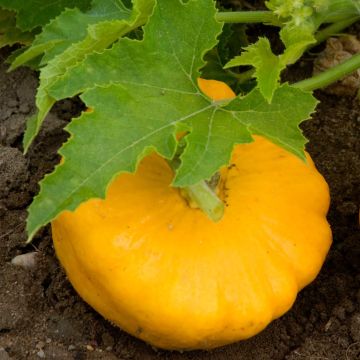

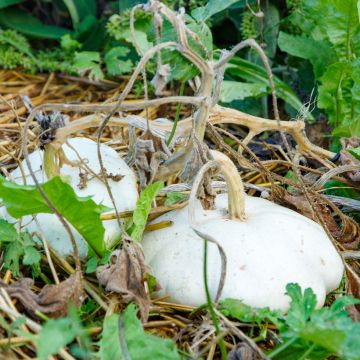

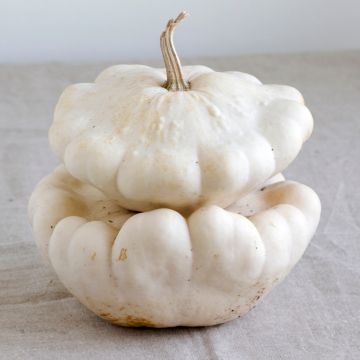



Comments